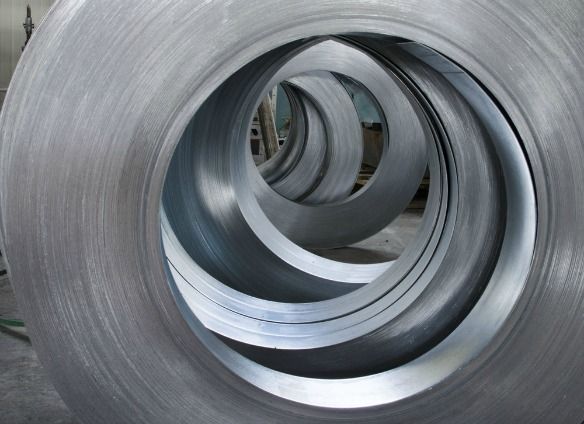
When it comes to stealing praise for its versatility and cost-effectiveness, few can deliver as great a performance as mild steel. The world's most common form of steel, it's applications are vast and relied upon everyday, and it can be cut to size and modified to suit where required. In this entry of the Austen Knapman blog, we're going to run down five of the best advantages mild steel has over other available forms of steel, and even other metals.
#5 - Cost-Effective
The least expensive of all steel types, many everyday objects are created using mild steel, including auto-mobile chassis, motorcycle frames and a great deal of cookware. The secret behind its affordability is its carbon content; ranging anywhere between 0.16% and 0.29%, this middle point of the carbon count range means it's strong enough for many jobs without being expensively tensile. When it's required in hefty orders, it can be produced en masse with a far reduced cost than your other steels, with results you certainly can't argue with.
#4 - Weldable
Unlike high-carbon steel, mild steel can be coalesced with far greater ease. Due to the specific properties of the metal, electric currents travel through it without distorting the 'make-up' of the material. This is different to, say stainless steel, where special techniques are needed in order to weld the metal to a professional standard. This cuts down on money spent both on man-hours and electrical costs, with a structural finish to round up its easy fabrication.
#3 - Ductile
Ductility is the measure of how much a material can be plastically deformed by elongation, without fracture. Materials that are strong in this regard can go more than 15% before they are permanently deformed and unable to go back to its original shape. Mild steel shares good company in this regard with copper and thermoplastics, able to bend, stretch and have relatively large forces applied to it, making it easier to form, shape and weld.
#2 - Can be Carburised
The major downside to mild steel is that it has a relatively low tensile strength, meaning it'll break more easily under tension than other steels. Luckily, there is a solution. Carburising is a heat treatment process in which either iron or steel is heated, with carbon liberated as it decomposes. When cooled via 'quenching', the surface is now hard, whilst the core remains soft and tough. This is a great means of enhancing the strength and wear properties of otherwise inexpensive steels, even improving its fatigue strength.
#1 - Recyclable
No different than most metals, scrapped mild steel is vital in the production of more of the same. Most steels can be recycled indefinitely without losing their quality, and due to its magnetic properties mild steel is particularly easy to recover from unsorted waste. We definitely advocate recycling your scrap as much as possible, as it's far cheaper than mining the iron ore and processing it to form more.
